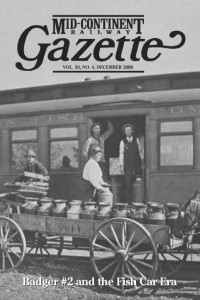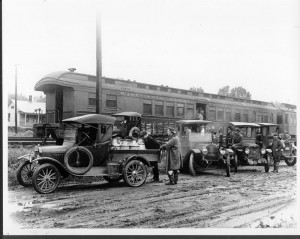A Special Issue of the Mid-Continent Railway Gazette
Volume 39, Number 4, December 2006
A car designed to carry fish. Seems comical but many states and the federal government had at least one. Their purpose was to transport small fish, known as fingerlings, from the hatchery to as many rivers, lakes and streams as possible in order to build up a cheap food supply to feed the large influx of European immigrants coming to America at the start of the 20th Century.
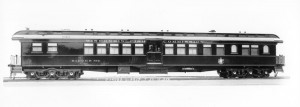
Builder’s photo of the Badger #2 car
Builder’s photo of the Badger #2 car built for the Wisconsin Fish Commission.
At that time rail was the most efficient and economical means of moving people and freight over long distances. Most roads were little better than dirt trails, with horses, mules and oxen the primary motive power. The fish car, coupled up to a passenger train, became the chosen method for moving the fingerlings by rail into the regions where people were beginning to establish their farms and villages.
The federal government had 10 such cars. Wisconsin had two appropriately named after the state animal. Badger #1 was built by the Litchfield Car Company in 1893. A wooden car approximately 55 feet long, it was replaced in 1912 by the larger and more durable Pullman built Badger #2, which stayed in train service through the 1940s.
The Badger #2’s history and status as the only known surviving fish car became the topic of the 2006 special edition of the Mid-Continent Railway Gazette. For the first time the Gazette became something more than a perk of membership. It served as our case statement in what became Mid-Continent’s largest fundraising campaign up to that time.
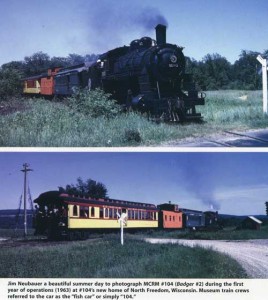
This special issue of the Mid-Continent Railway Gazette traces the car’s history from the factory all the way up to its time at Mid-Continent where it was used as a coach to haul museum visitors in Mid-Continent’s early years.
Our museum had received a $475,000 challenge grant from the Jeffris Family Foundation of Janesville, WI, for the purpose of restoring Badger #2 back to its original appearance. The terms of the grant required Mid-Continent to raise a matching amount within a designated period of time. No match, no funds, so the challenge was great and the magazine for the first time played a significant part in soliciting donations.
The Gazette’s content was explicit about the nature of the campaign. And stapled into the centerfold of the magazine was a business reply envelope addressed to a drop box at our bank in order to make the donation process as easy as possible.
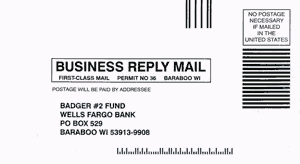
The special Mid-Continent Railway Gazette issue not only offered a compelling history of the Badger #2 but also provided a convenient way for readers to contribute toward the car’s restoration.
The well documented and highly illustrated Badger # 2 Gazette was the work of Leah Rosenow, our summer intern whose research into Louis W. Hill’s business car, the Great Northern A-22, earned her a place on the museum staff as our archivist. And once again the magazine’s layout was the work of Paul Swanson, Mid-Continent member and volunteer editor.
The result was a beautiful and informative magazine which helped produce a successful fundraising campaign. A fully restored Badger #2 can now be seen in the Coach Shed at our museum in North Freedom. Copies of this special edition Gazette can be purchased in our gift shop or calling 800-930-1385. The proceeds of all such purchases benefit the on-going preservation work of our historical society. We appreciate your support and hope you enjoy reading about the long-forgotten service of the Badger #2 and the fish car era.
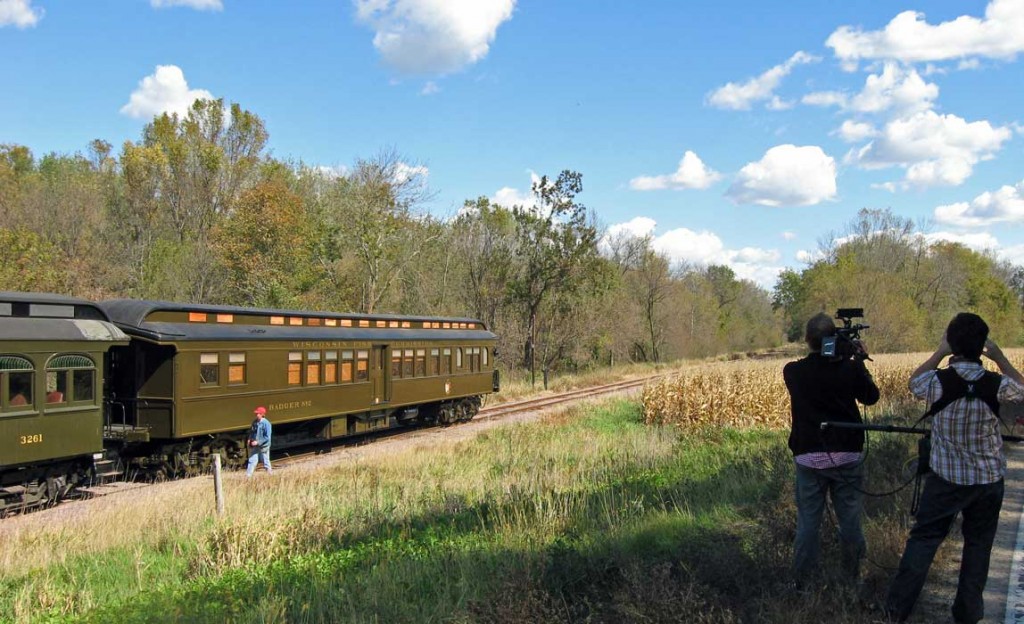
Not only did the Badger #2 make a splash in the Gazette, it also caught the attention of a television production company. In October 2010 the restored #2 was temporarily removed from its display building for a short trip along Mid-Continent’s line for filming by the documentary crew. The television series ‘Ultimate Restorations’ first aired on PBS affiliate stations in 2014.
Don’t miss out on any further issues by becoming a museum member! A subscription to the Mid-Continent Railway Gazette is one of numerous benefits of membership to the Mid-Continent Railway Historical Society.
PREVIOUS Special Issue
NEXT Special Issue
RETURN to Mid-Continent Railway Gazette Main Page

